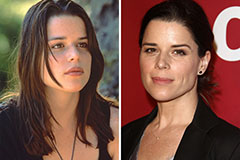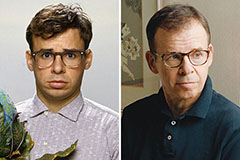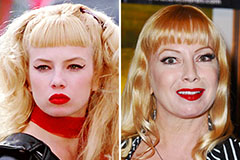
Painting landscapes is a terrific way to get pleasure from art and mother nature simultaneously. Regardless of whether you might be new to painting or picking up a brush soon after a long time, learning the way to paint landscapes may be both equally entertaining and enjoyable. You don’t should be a pro to start out—just a little bit of exercise, patience, and the appropriate actions.
Select the Right Resources
Getting going with landscape painting won't require high-priced tools, but selecting the suitable supplies might make your experience less difficult plus more fulfilling. In case you’re a starter, maintain factors very simple and concentrate on good quality about quantity.
Paints: Acrylic and watercolor are equally good options for beginners. Acrylic paints dry swiftly, are convenient to use, and don’t have to have special cleaners—just water. They’re also forgiving should you generate a slip-up. Watercolors tend to be more fragile and offer a soft, fluid appear that’s perfect for mild landscapes, However they just take extra control. Choose whichever feels much more organic for you.
Brushes: You don’t require a huge set. Begin with 3–5 brushes of different sizes and shapes. A considerable flat brush is beneficial for skies and backgrounds. A spherical brush will help with trees and information. A more compact depth brush may help with finishing touches. Synthetic brushes are inexpensive and perform effectively with each acrylic and watercolor.
Paper or Canvas: For acrylics, stretched canvas or canvas paper functions nicely. For watercolors, select thick watercolor paper (a minimum of 300gsm). Thin paper can buckle when soaked, so Opt for a thing durable. Pads are fantastic for apply, and sheets may be taped down for portray.
Other Materials: You’ll also require a palette (a plastic or wooden surface for mixing paint), a cup or jar for h2o, and paper towels or even a rag for cleansing brushes. A pencil and eraser are valuable for sketching your scene before you paint.
Don’t neglect to guard your workspace—use newspaper or an old fabric. In case you’re painting outside, convey a transportable kit as well as a board or easel.
Start with what you have or can afford to pay for. While you boost, you’ll find out which equipment match your fashion. But with just some fantastic resources, you’re prepared to start portray your initial landscape.
Pick a straightforward Scene
When you're just getting started with landscape painting, it’s greatest to start with a thing straightforward. Choosing the appropriate scene can make the method much less frustrating and enable you to master the fundamentals without the need of acquiring pissed off. A simple scene permits you to concentrate on shade, shape, and composition with no remaining distracted by too many facts.
Begin by finding a landscape with a transparent construction. By way of example, a industry using a tree, a Seashore at sunset, or a little hill below a blue sky. Keep away from busy scenes like dense forests or cityscapes stuffed with properties. These have too many factors and might be tricky to manage in case you’re continue to learning.
Using a Picture reference is a good suggestion. You normally takes a photo your self or uncover just one on the internet. Hunt for images with powerful mild and darkish regions, apparent horizons, and basic shapes. This assists you understand how to break the scene into elements—sky, land, trees, drinking water, and so forth.
Center on a few matters: a foreground, Center floor, and background. This helps produce depth within your painting. An easy lake scene, as an example, may need grass or rocks in front, the lake in the middle, and hills or sky within the back.
Don’t be worried about copying the photo precisely. Use it for guidance, but Be happy to vary hues or go away out information. What issues most is practising how to arrange Area and use color effectively.
As you get more snug, you could check out additional intricate scenes. But for now, commence tiny and Develop your confidence. Painting a straightforward scene properly teaches you over struggling via an advanced just one. So you’ll probably enjoy the procedure far more, which can be equally as significant as the result.
Sketch The essential Designs
Before you start painting, it can help to lightly sketch The essential shapes within your scene. This phase gives composition in your work and can help you plan where by almost everything will go. You don’t need to be good at drawing—just give attention to positioning the principle aspects.
Start with the horizon line. This is when the sky meets the land or drinking water. It sets the standpoint and separates the track record from the remainder of the scene. Draw it flippantly having a pencil throughout your paper or canvas.
Next, block in the principle styles. As an example, for those who’re painting a hill, attract a soft curve. If there’s a tree, sketch an oval to the leaves and a rectangle to the trunk. Continue to keep it easy—Assume in terms of circles, rectangles, and triangles. You're not drawing each individual leaf or wave, just showing the place matters are.
Pay attention to scale and placement. Objects which might be nearer should look much larger, while distant ones must be lesser. This assists make depth and will make your painting search far more real looking.
If you’re using a Photograph, Assess parts during the image. Exactly where would be the tree in relation to your hill? How superior is the sun within the sky? Use these clues to place your shapes precisely.
Don’t concern yourself with best traces. You’ll paint in excess of the sketch later on. This is certainly merely a tutorial to assist you to feel confident before adding coloration. Some artists even skip sketching once they gain experience, but after you’re learning, it’s a helpful step.
Take a minute to step back and look at your sketch. Make sure it feels well balanced. Change nearly anything that appears off. After you're pleased with the layout, you're all set to start out painting above it together with your foundation shades.
Block in the principle Hues
After your sketch is completed, the next move is to dam in the key colors. This suggests filling massive areas of your portray with standard shades. You’re not including details nonetheless—just laying down the inspiration. Think of it like portray the track record of a household just before adding the Home windows and doors.
Get started with the biggest parts of your scene. When you’re painting a sky, address that spot initial. Utilize a huge brush to paint in sleek strokes. Then go forward to the land, drinking water, or trees. Use flat, even colors to fill Just about every region. Don’t stress if it seems flat or very simple right this moment—this phase is about setting up construction.
Pick out colours that match the final really feel with the scene. In case your sky is at sunset, you would possibly use oranges, pinks, and purples. To get a midday scene, smooth blues and whites are better. The purpose is to secure a sense of the general temper.
Function through the history for the foreground. Which means portray the sky and far-away hills right before adding closer trees or objects. This causes it to be much easier to layer paint and steer clear of smudging.
Should you be applying acrylics, you’ll require to operate promptly since they dry quickly. For watercolors, Permit Each individual section dry just before portray beside it so the colours don’t blend an excessive amount of Except if you desire them to.
At this time, your portray will continue to appear rough. That’s alright. Think about it like placing the phase for what will come future. You’re supplying yourself a base to construct on.
After the principal colours are blocked in and dry, it is possible to proceed to incorporating shadows, gentle, texture, and the many minimal particulars that carry the scene to daily life. But initially, center on receiving the primary shades in the appropriate position.
Insert Depth with Levels
As soon as you’ve blocked in the principle shades, it’s time to create depth. Depth helps make your painting really feel much more real, like you could move into it. You could make this by incorporating layers of color, texture, light-weight, and shadow.
Start out by Doing work from your track record to the foreground. Increase A different layer on the sky if necessary—maybe lighter close to the horizon, darker at the highest. For hills or mountains, layer various shades to point out length. Things that are far-off must be lighter and less detailed. This trick is referred to as “atmospheric viewpoint” and it helps make Area inside your portray.
Following, take a look at spots the place light and shadow tumble. Use darker shades to incorporate shadow less than trees or alongside the side of hills. Use lighter shades exactly where daylight hits. Don’t use black—try out darker variations of the colors now with your painting. This keeps things hunting all-natural.
Use scaled-down brushes now. Include texture to trees with brief, quick strokes. For grass, check out dabbing or utilizing a dry brush. For h2o, you'll be able to evenly sweep with horizontal strokes to show reflections.
Permit each layer dry ahead of adding the following for those who’re making use of acrylics. For watercolors, be mindful not to make use of an excessive amount water otherwise you’ll elevate the layer beneath.
Get your time and energy and step back again generally. Look at where you will need much more distinction or smoother transitions. Layering isn’t just about including additional paint—it’s about building up your scene bit by bit, like shaping clay.
By incorporating levels cautiously, you’ll make your landscape seem further and more alive. It requires tolerance, however it’s worth more info it. Layers support convey to the Tale of one's scene—through the considerably sky to the leaves close to you.
Give attention to Gentle and Shadows
Gentle and shadows are what give your painting daily life. They assist clearly show time of working day, temper, and condition. Without them, a landscape can appear flat. Being attentive to how mild hits your scene can make almost everything sense additional serious.
Start by choosing a light source. In most landscapes, the Solar is the main light. Decide where it is—high above, reduced around the horizon, towards the left or ideal. This informs you wherever shadows will slide. In case the Sunlight is around the left, shadows will tumble to the appropriate, and vice versa.
Use lighter shades to point out regions which can be hit by light-weight. These places need to get noticed a bit. Don’t just use white—try applying heat, delicate tones that match your color plan. By way of example, a sunlit tree may need bright yellow-environmentally friendly leaves.
For shadows, use darker versions of your foundation colours. A green industry may have dark environmentally friendly or blue while in the shaded components. Stay clear of working with plain black—it will make your portray look uninteresting or harsh. Shadows continue to have shade, just less gentle.
Pay attention to tender and tough edges. A shadow under a tree could possibly be sharp, but a shadow on a hill is likely to be delicate and blurry. Mix in which required to hold things normal.
Also, search for mirrored light. Often, light bounces off a surface area and brightens up the shadow a little bit. This can be very true in water or on gentle-coloured ground.
Use gentle and shadow to develop contrast. This can help lead the viewer’s eye to special portions of your painting, just like a tree or maybe a path. A brilliant patch from a dark track record will stick out more.
Paying time on this action makes an enormous variance. Even a simple scene can truly feel abundant and real looking when light and shadow are employed very well.
Keep Practicing
Recuperating at portray landscapes usually takes time. No one turns into wonderful right away. Each individual artist—no matter how competent—commenced by building issues and learning from them. So The most crucial tip is easy: preserve practising.
Don’t fear If the to start with couple paintings don’t appear to be you imagined. That’s normal. Each painting teaches you some thing. Probably you find out how to Mix skies greater, how to generate trees seem considerably less flat, or how to fix muddy colours. These tiny lessons add up.
Try portray a similar scene much more than at the time. The 1st Model is likely to be tough, but the next or third will display improvement. You’ll notice belongings you didn’t see in advance of—how the light operates, in which the shadows fall, or how to use improved shades.
Experiment with instruments far too. Make use of a sponge, palette knife, or perhaps your fingers. Different applications can make new results and assist you to find your model. Look at videos, look at other artists’ get the job done, and get notes. There’s usually a little something new to try.
And remember, it’s ok to get breaks. Sometimes stepping absent assists the thing is your perform with fresh new eyes. But constantly come back.
The greater you paint, the more self-confident you’ll get. Your hands will understand the motions, and your eyes will figure out how to see shapes, gentle, and color additional clearly. Retain going.
Closing Ideas
Discovering to paint landscapes will take time, tolerance, and apply. But it really’s a skill everyone can build. You don’t need to have expensive equipment or decades of training to start out. Anything you do want is often a willingness to try, mess up, and check out yet again.
Each phase—deciding upon your supplies, sketching, blocking in colour, incorporating depth, specializing in light and shadows—teaches you one thing new. With just about every portray, you receive somewhat improved. Some times will really feel aggravating. Other times, points will simply click. That’s part of the process.
Painting landscapes also will help you decelerate and think about the environment differently. You start noticing how the sun lights a area or how trees adjust form with length. It would make you extra observant and existing.
Don’t worry about perfection. The goal isn’t to copy nature precisely—it’s to capture how it feels. Perhaps it’s a quiet morning by a lake, or the warmth of the late afternoon in the hills. If your painting makes someone feel that, you’ve done something right.
So take your time and energy, love the procedure, and continue to keep likely. Just about every landscape you paint provides in your progress. And with time, you’ll see just how much you’ve come. Keep portray, and Permit character inspire you.
 Neve Campbell Then & Now!
Neve Campbell Then & Now! Rick Moranis Then & Now!
Rick Moranis Then & Now! Bug Hall Then & Now!
Bug Hall Then & Now! Traci Lords Then & Now!
Traci Lords Then & Now! Bernadette Peters Then & Now!
Bernadette Peters Then & Now!